Mastering Coffee Ratios for French Press Brewing
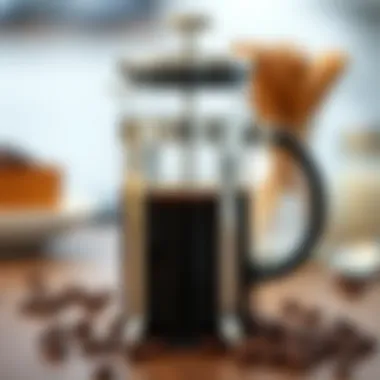
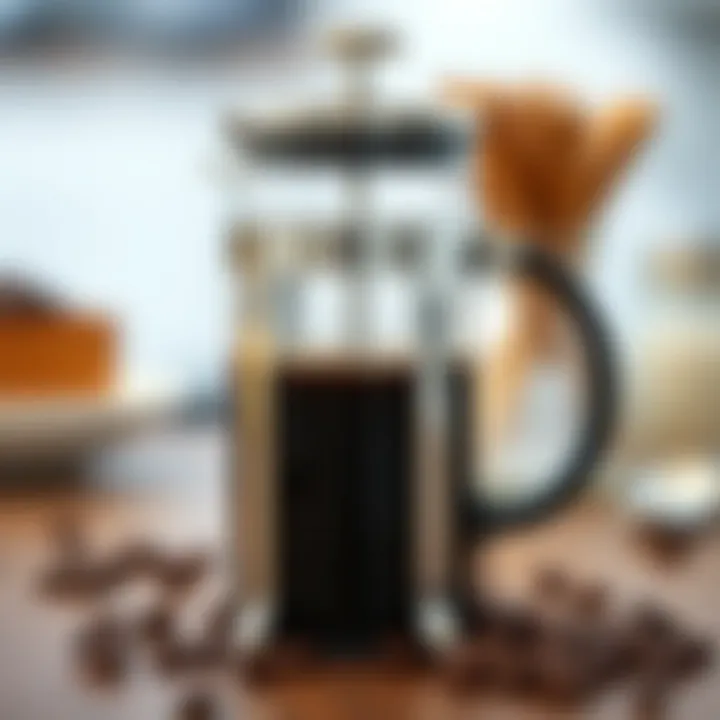
Intro
Brewing coffee with a French press offers a delightful opportunity to delve into the complexities of flavor and aroma. For many coffee enthusiasts, this method stands out as one of the most flavorful approaches. However, getting the right quantity of coffee can seem like a guessing game for those new to the press. This article demystifies that by providing a guide on the quantities needed for the perfect brew.
The French press isn't just a brewing tool; it's a vessel of art. When brewed correctly, the coffee emerges rich and fragrant, revealing the unique attributes of each bean. Yet, many people grapple with the question of how much coffee to use. Factors such as personal taste, the strength desired, and the size of the brew all come into play. This makes it essential to understand how each element interacts. As you move through this guide, you'll discover practical tips that cater to individuals and serve as a solid foundation for coffee aficionados looking to elevate their experience.
Ingredients Breakdown
To embark on your French press journey, there are certain ingredients and tools that you'll need to gather.
Primary Ingredients
- Coffee Beans: Freshly roasted coffee beans are crucial. The flavor profile varies significantly based on the source and roast level.
- Water: Clean, filtered water will enhance the flavors of the coffee. Avoid using tap water that might carry unwanted minerals or chlorine.
Optional Ingredients
- Milk or Cream: Depending on personal preference, adding dairy can create a smoother taste.
- Sweeteners: Sugar or natural sweeteners like honey can adjust the flavor to your liking.
- Flavorings: Spices like cinnamon, nutmeg, or vanilla extract can be included for added complexity.
Essential Kitchen Tools
- French Press: The heart of the operation, choose a model that suits your style. Whether glass or stainless steel, ensure it's of good quality.
- Coffee Grinder: For the best flavor, grind your beans just before brewing. A burr grinder is typically preferred for consistency.
- Scale: A digital scale can help achieve precise measurements.
- Kettle: A kettle that can reach the necessary temperature easily will aid in extraction.
Knowing what you need is half the feat. The right ingredients and tools pave the way to a superior French press experience.
Step-by-Step Preparation
Starting your French press adventure requires a bit of prep work.
Prepping the Ingredients
Begin by measuring your ingredients. A general guideline is to use one ounce of coffee beans for every two cups of water. Adjust this ratio based on your preference. If you enjoy your java stronger, lean toward more coffee. Conversely, if you favor a milder cup, cut back a bit.
Cooking Techniques and Methods
- Grind the Beans: Aim for a coarse grind, resembling breadcrumbs. A fine grind can lead to over-extraction, making your coffee bitter.
- Heat the Water: Bring your water to a temperature between 195°F to 205°F. This range is optimal for extraction and avoids scalding the coffee.
- Combine: Place the ground coffee into the French press and pour hot water over it evenly. Stir gently to ensure that all the coffee grounds are saturated.
- Steep: Allow the coffee to steeps for about four minutes. If you like a richer flavor, you may experiment with a longer brew time.
- Plunge: Slowly press down the plunger. Pour immediately to prevent further steeping and bitterness.
Assembly and Presentation Tips
Consider using a warmed mug to keep your drink hot for longer. If you have guests, pouring coffee into a thermos can keep it fresh and hot without the worry of it sitting too long on the counter.
Dietary Considerations
French press coffee is generally gluten-free and can easily accommodate various dietary needs. However, let's explore more options.
Gluten-Free Options
All the ingredients mentioned, when used in their pure forms, are naturally gluten-free. Just ensure any added ingredients, like flavored syrups or creamers, are also gluten-free.
Vegetarian and Vegan Substitutes
The basic French press recipe is inherently vegetarian and can be made vegan simply by skipping dairy or opting for plant-based milk. Almond milk or oat milk provides an excellent alternative.
Nutrition Facts & Nutritional Considerations
A standard serving of black coffee contains minimal calories—typically around 2 calories per 8-ounce cup. It's essential to consider any additional ingredients that might alter this.
Variations and Customizations
Every coffee lover has unique tastes. Here are some ideas to personalize your brewing experience.
Flavor Enhancements
Consider adding a splash of flavored syrup, or try infusing spices into your ground coffee before brewing.
Alternative Cooking Methods
If the French press doesn’t suit your fancy, consider pour-over or Aeropress for different tasting notes.
Pairing Suggestions
Serve your French press coffee with breakfast pastries, or enjoy it alongside a rich chocolate dessert for a truly indulgent experience.
Common Commonly Asked Questionss and Troubleshooting
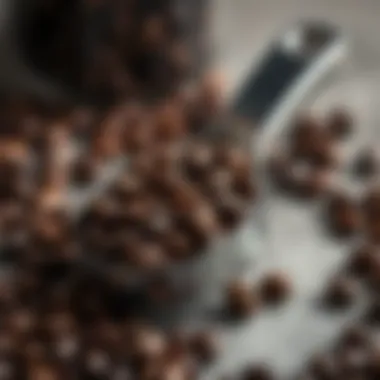
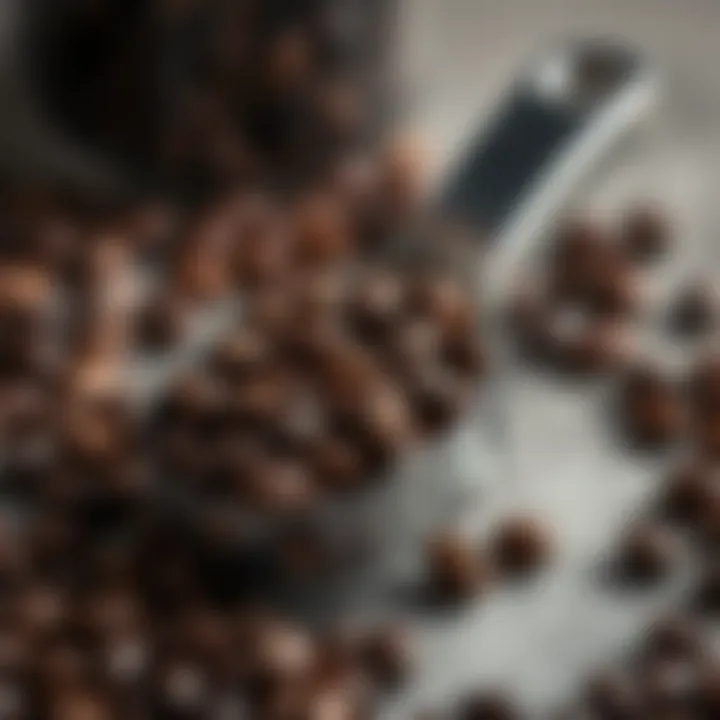
As with any craft, questions often arise.
Frequently Asked Questions
- How long should I steep the coffee? A 4-minute steep is recommended, but you can adjust based on your taste.
- Why is my coffee bitter? Over-extraction from too fine a grind or steeping too long can be culprits.
Common Mistakes to Avoid
A frequent error is using boiling water directly from the kettle. This can scorch your coffee grounds. Allow the water to cool a bit before pouring.
Solutions to Potential Problems
If your coffee tastes weak, consider increasing the coffee-to-water ratio next time or using a slightly finer grind.
In the world of coffee, experimentation is key. Each brew can be a new discovery.
With these guidelines, you're well on your way to mastering the French press and creating individualized coffee experiences that leave a lasting impression.
For more in-depth readings on coffee brewing, consider checkin out resources like Wikipedia and Britannica.
Understanding the French Press Method
In the realm of coffee brewing, the French press stands as a testament to simplicity and elegance. While modern conveniences have made their way into every kitchen, the act of brewing coffee with a French press remains a cherished ritual for many. Understanding this method is crucial for anyone aiming to extract the utmost flavor from their coffee.
Using a French press is not simply about pouring hot water over ground coffee; it is a careful orchestration of time, temperature, and technique. This article aims to illuminate the finesse involved in this process. The French press, often called a press pot or plunger pot, allows the oils and sediments from the coffee grounds to mingle freely with water, resulting in a rich, full-bodied cup.
This method does require some thought about the ratio of coffee to water—an aspect that can significantly alter the taste profile. One must also consider the grind size and steeping time, all of which are pivotal in achieving the desired flavor intensity.
What is a French Press?
At its essence, a French press is a manual brewing device that employs immersion and filtration to create coffee. Consisting of a cylindrical glass or stainless-steel carafe, a plunger with a mesh filter, and a lid, the French press contrasts sharply with drip coffee makers or espresso machines.
When using a French press, one adds coarsely ground coffee to hot water, allowing it to steep for a few minutes. The plunger is then pressed down to separate the grounds from the liquid, resulting in a cup that captures rich flavors and aromas. This hands-on approach not only gives the user a sense of control but also allows for a more personal connection to the brewing process.
Benefits of Using a French Press
The allure of the French press is manifold, appealing to novice coffee drinkers and aficionados alike. Here are several benefits that make this brewing method a favorite:
- Rich Flavor: The French press allows the natural oils and fine particles of coffee to remain in the brew, leading to a fuller taste.
- Simplicity: With minimal parts and a straightforward process, brewing coffee with a French press is accessible even for the least technically inclined.
- Cost-Efficiency: French presses are relatively inexpensive and durable, making them an excellent investment for those who enjoy coffee.
- Customization: By adjusting brewing time and coffee-to-water ratios, users can tweak the strength and flavor to suit their preferences.
"The journey to a perfect cup of coffee starts with understanding how the French press works and how to manipulate its variables."
Optimal Coffee to Water Ratio
When it comes to brewing a stellar cup of coffee with a French press, the coffee to water ratio serves as the very foundation of a delightful experience. This ratio essentially governs the strength, flavor, and overall satisfaction of your brew. Getting this balance right can make the difference between a flat, bland cup of joe and a rich, aromatic masterpiece that will have you coming back for more.
Understanding Ratios
A ratio, in simple terms, is a comparison between two quantities. In French press brewing, the most common relationship we examine is how much coffee you use in relation to how much water. Think of it as a dance; the two need to work in harmony.
Getting this ratio right not only enhances flavor but also determines how well the coffee particles extract their goodness during the brewing process. If you brew with too much water, your coffee might come out weak—like a sad, wilted flower. Conversely, too little water can lead to an overly bitter and harsh brew, making you feel like you've bitten into a sour lemon. A general guideline is 1:15 to 1:17, which translates roughly to one gram of coffee for every 15 to 17 grams of water.
Standard Ratios for French Press
Most coffee aficionados will tell you that a good starting point for a French press is about 2 tablespoons of coffee for every 6 ounces of water. This popular ratio falls around 1:15, which strikes a good balance for many palates.
However, it can help to visualize this with an example. Suppose you’re using 30 grams of coffee; this would mean you’d want approximately 450 grams of water. Here are some quick conversions you might find handy:
- 1 tablespoon = 5 grams of coffee
- 6 ounces of water = 180 milliliters
For a regular 12-ounce cup, that might translate to about 2.5 tablespoons of coffee. The beauty of these ratios is that they offer you a framework but can be modified to suit your taste.
Adjusting Ratios for Personal Preference
Now, let’s hit the brakes for a moment. Personal preference comes into play here, and that’s a game changer. Just as each person has their unique taste in wine, coffee isn’t a one-size-fits-all ticket. Adjusting the ratio allows you to customize your brew according to your likes.
If you fancy a heftier brew that packs a punch, you might venture towards a 1:12 ratio, adding a bit more coffee for a stronger flavor. On the contrary, if you prefer a nuanced, lighter cup, consider a 1:18 ratio that offers a milder, more delicate taste.
Experiment with your ratios, and keep notes on what you enjoy. You never know what combination might surprise you!
Remember: When adjusting your coffee to water ratio, it’s all about gradual tweaks. A small change can lead to a vastly different outcome, so make adjustments slowly until you find your ideal cup.
Measuring Coffee Grounds
When it comes to brewing a fantastic cup of coffee with a French Press, measuring the coffee grounds accurately plays a crucial role. The strength, flavor, and overall satisfaction of your coffee largely hinge on how much coffee you use in relation to the water.
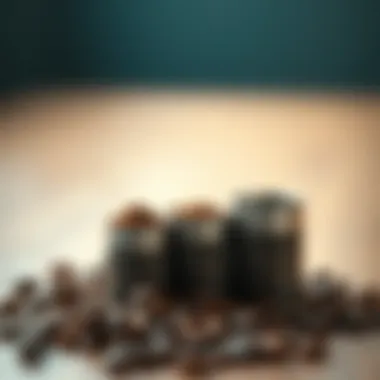
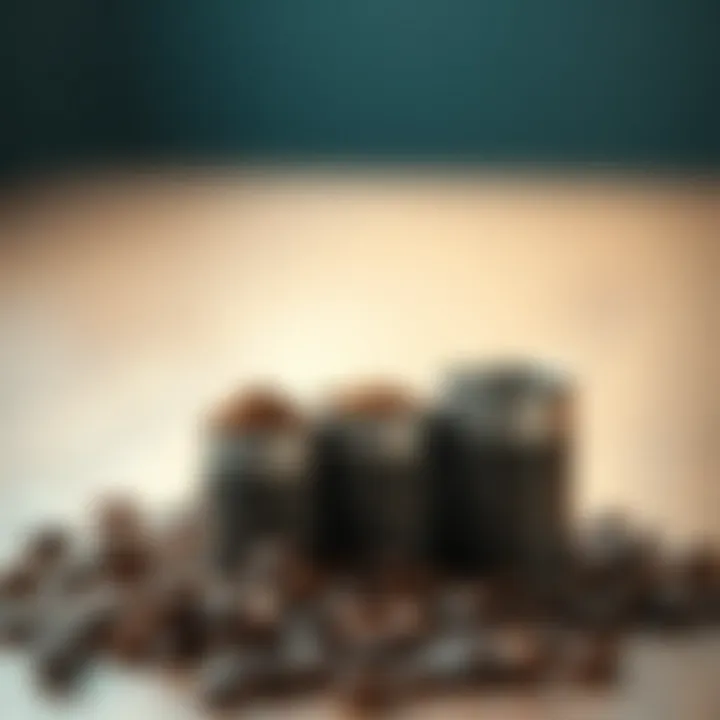
Getting the balance right can mean the difference between a cup that is either too weak or overwhelming. Whether you’re a novice or a seasoned brewing aficionado, understanding how to measure coffee grounds offers a path to achieving that perfect brew. Plus, it eliminates guesswork, leaving you free to enjoy your cup without the uncertainty of whether you’ve brewed it just right.
Using Weighing Scales
Using a weighing scale is one of the most precise methods for measuring coffee grounds, and it’s worth its weight in gold—literally. The general guideline for a French Press is to aim for a coffee-to-water ratio of about 1:15. To achieve this, many prefer using kitchen scales to measure the coffee in grams.
For example, if you're brewing 300 ml of water, you should use around 20 grams of coffee. Scales give you the accuracy that scoops or tablespoons can't, especially when it comes to varying densities of different coffee beans.
This method eliminates the guesswork involved with traditional measuring cups, making it simpler to replicate your favorite brew every time.
Using Tablespoons as a Measure
If you don't have a scale handy, using tablespoons can be your next best bet. Generally, a tablespoon of coffee weighs about 5 to 7 grams. While it’s less accurate than weighing, it’s a straightforward and easy option for those who do not require absolute precision.
You can also build a standard practice: using 2 tablespoons for every 6 ounces of water. This method is appealing for casual brewers who want a decent cup without fussing over numbers too much.
It might be a little on the imprecise side for some, but it certainly helps in crafting that everyday cup without a digital readout sitting on the counter.
Understanding Grind Size Impact
One crucial element that often gets overshadowed when measuring coffee grounds is grind size. The grind size affects how much surface area of the coffee is in contact with water, which in turn affects extraction.
For French Press brewing, a coarse grind is ideal. If your coffee is ground too finely, it can lead to over-extraction, causing flavors you might not appreciate. Conversely, a coarser grind means a shorter extraction time is necessary, resulting in a more balanced and enjoyable cup.
Remember, if you change the grind size, it might be worth adjusting your coffee measurements.
"Finding the right grind is often as important as measuring the coffee itself; it can change the game completely."
Adjusting for Serving Sizes
When it comes to enjoying a well-brewed cup of coffee from a French press, understanding how to adjust for serving sizes is paramount. This section highlights why aligning your coffee quantity with your desired servings matters, making sure that each cup is as satisfying as the last. By keeping a handle on coffee amounts, you ensure that everyone’s taste buds are tickled just right.
Brewing for One
Brewing just a single cup with a French press might seem straightforward, but getting the measurements right can be a bit tricky. For a solo brew, a common guideline is to use about 15 grams of coffee for every 250 milliliters of water. This ratio stands firm whether you prefer a rich, bold flavor or a lighter brew. When measuring out your coffee, a kitchen scale can make this process effortless, allowing you to hit that sweet spot time and again.
To simplify, here’s what you need:
- 15 grams of coarsely ground coffee
- 250 milliliters of hot water
This quantity yields a delightful cup without overwhelming your senses. Remember, using the right grind size is equally important. A coarse grind ensures maximum flavor extraction while preventing over-extraction that can muddle the taste.
A simple rule of thumb: know your taste preference before diving into brewing. A little tweak here or there can change everything while brewing just for one.
Brewing for Multiple Servings
When entertaining friends or family, scaling up your coffee brewing can feel daunting, but it doesn’t have to be. For multiple servings, you can follow the same 15 grams of coffee per 250 milliliters of water principle. Just multiply accordingly. For example, if you plan to serve four cups, you would need:
- 60 grams of coffee
- 1 liter (1000 milliliters) of water
This straightforward mix ensures that function and flavor remain balanced across a crowd. It’s imperative to maintain proper coffee-to-water ratios to ensure consistency in flavor, no matter how many cups you are preparing.
One key point to note is if you are making a significantly larger batch, allowing for a slight increase in the steeping time by a minute or so can enhance flavor extraction without overdoing it. With multiple servings, consider adjusting the steep time to ensure each cup shines.
In a nutshell, adjusting for serving sizes isn’t just about the quantity of coffee or water. It’s about crafting a coffee experience that resonates with every drinker.
Brewing Techniques for Optimal Flavor
Brewing coffee is both an art and a science, especially when it comes to using a French press. There are distinct techniques that can genuinely enhance the flavor of your brew. Understanding these methods can help transform a routine cup of coffee into a delightful experience, allowing for deeper appreciation and enjoyment.
Blooming Coffee Grounds
Blooming the coffee grounds is the first step toward unlocking the full potential of your coffee beans. This technique involves pouring a small amount of hot water over the coffee grounds before the full brewing process begins. The water activates the gases trapped in the coffee grounds which release during the first few moments of contact.
- Why Blooming Matters:
When coffee is ground, carbon dioxide is produced. If you skip this step, the gas can negatively affect extraction, resulting in uneven flavors. - How to Bloom:
- After adding the coffee grounds to your French press, use a water temperature just off the boil—around 200°F (93°C) works well.
- Pour enough water to saturate the coffee without fully immersing it.
- Let it sit for about 30 seconds. During this time, you'll notice the grounds puffing up, which is a sign that they’re releasing gas.
This seemingly simple addition can significantly enrich the flavor profile, leading to a more complex cup.
Timing the Brewing Process
Timing is a crucial aspect of brewing with a French press. It's not just about how long you let your coffee steep; it’s also about knowing the right time to start pouring. Getting it right can mean the difference between a cup that's pure bliss and one that's dull or bitter.


- Why Timing is Key:
Each coffee bean has a specific optimal brew time that brings out the sweetness, acidity, and body without extracting unpleasant bitterness. Oversteeping leads to unpleasant flavors, while understeeping means you won’t extract enough flavor. - Recommended Steeping Times:
- For optimal extraction, a steeping time of 4 minutes tends to work well for most beans.
- You can also experiment a bit. If your coffee tastes bitter, try shortening the steeping time by 30 seconds.
- Conversely, if it lacks flavor, extend it slightly.
Adjusting brew time is a matter of personal preference, so take notes and find what time works best for you!
By focusing on these brewing techniques, you set the stage for creating an exceptional French press coffee experience. Each step, from blooming the grounds to precisely timing the brewing process, contributes significantly to the overall flavor profile, helping you achieve that perfect cup that’s distinctly yours.
Consistency in Brewing
Consistency in brewing is foundational for achieving that perfect cup of coffee with your French press. It’s not just about getting lucky with the right measurements; it’s about regulating various factors to ensure that each brew is as delightful as the last. Not only does consistency lead to better taste, but it also optimizes the brewing experience, allowing both novices and aficionados to explore the depths of flavor that coffee can offer.
Consistency of Grind Size
When it comes to French press coffee, the grind size has a far-reaching impact on extraction. A consistent grind size means that all the coffee grounds are treated equally during extraction. If some grounds are coarse while others are fine, the result is a mishmash of over-extraction and under-extraction flavors. Imagine biting into a piece of chocolate cake where half the bites are dry and the other half are gooey; that’s what uneven grinding does to your coffee.
For a French press, you ideally want a coarse grind, roughly the texture of sea salt. This promotes a balanced extraction without clogging the mesh filter. Here are a few tips to maintain grind size consistency:
- Use a burr grinder: Unlike blade grinders, burr grinders produce grounds of uniform size.
- Measure your beans: Weigh out your beans for each brew - precision helps in achieving that desired consistence.
- Adjust settings as needed: If your grinder has settings, play with them until you find the grind that works best for your taste.
By keeping your grind consistent, you’ll improve your chances of capturing the full profile of flavors in your coffee, resulting in a reliably delicious cup.
Maintaining Water Temperature
Water temperature is another critical aspect of consistency in brewing. The water acts as the medium for extraction, and if it’s too hot or too cold, the coffee can taste drastically different. Ideally, water should be around 200°F (93°C). At this temperature, the water extracts the right amount of oils and flavors from the coffee grounds, leading to a well-rounded cup.
Key points to keep in mind:
- Preheat the French press: Before adding coffee and water, a quick rinse with hot water can help maintain temperature during brewing.
- Use a thermometer: If you want to be precise, a thermometer can help monitor temperatures, especially if you often find your brews too bitter or too weak.
- Experiment within a range: A range of 195°F to 205°F balances extraction, so don’t sweat small fluctuations - just keep it close.
Using the right temperature consistently will allow solo cup after cup without worrying about the flavor taking a nosedive.
Common Issues and Troubleshooting
When it comes to brewing coffee using a French press, the process can feel pretty straightforward. However, even the most seasoned coffee lovers sometimes run into a few hiccups along the way. Addressing issues like over-extraction and under-extraction becomes essential not just for ensuring that each cup is delightful but also for avoiding bitterness or a lackluster brew. Understanding these common problems can help you refine your coffee techniques and enhance every sip. It's worth bearing in mind that achieving the perfect brew may take some experimentation, so don't hesitate to adapt your methods based on the outcomes you observe.
Over-Extracted Coffee
Over-extraction occurs when coffee grounds are in contact with water for too long or when the grind size is too fine. The result? A bitter brew often characterized by unwanted flavors akin to chewing on an old leather shoe. The key indicators of over-extraction are a strong, pungent taste and a lingering aftertaste that just isn't pleasant.
Some common culprits behind over-extracted coffee include:
- Brew Time: Leaving the brew for too long can pull out excessive oils and flavors you don’t want.
- Grind Size: If your grounds are too fine, they can lead to an overly bitter taste.
- Water Temperature: Hot water temperatures can extract flavors faster, pulling bitterness from the beans if not controlled properly.
To fix these issues, consider these steps:
- Adjust Grind Size: Experiment with coarser grinds.
- Shorten Brew Time: Try reducing the steeping time to about 3 to 4 minutes.
- Monitor Water Temperature: Aim for temperatures around 200°F for optimal extraction.
Making these adjustments can make the difference between a bitter experience and a coffee that sings!
Under-Extracted Coffee
Conversely, under-extraction happens when coffee grounds haven't had enough time to develop their flavors, resulting in a surprisingly sour or flat cup. The taste is often described as lacking depth, reminiscent of water that's been passed over beans for only a moment. It's definitely not the flavor profile anyone desires.
The reasons for under-extraction might include:
- Insufficient Brew Time: Not letting your coffee steep long enough prevents full flavor development.
- Grind Size: Coarse grounds may not extract enough flavor.
- Water Temperature: Using cooler water won’t effectively draw out the rich flavors from the coffee.
To remedy this common problem, consider:
- Increase Brew Time: Letting your grounds steep longer—up to 5 minutes—can help extract those subtle flavors.
- Adjust Grind Size: Try a slightly finer grind to allow more contact area with the water.
- Ensure Proper Water Temperature: Stick to that sweet spot of around 200°F to promote optimal extraction.
"The perfect cup of coffee is not just about the beans, but how you treat them."
To learn more about coffee extraction, you might want to dive into some additional resources:
- Wikipedia: Coffee Brewing
- Britannica: Brewing Coffee
- Reddit discussions on French Press Brewing Tips
Navigating the world of French press brewing can be a mix of science and art, but awareness of issues like over and under-extraction provides a solid grounding for anyone looking to perfect their brews. Happy brewing!
Closure
Finding Your Ideal Brew
Finding your perfect cup is akin to conducting a chemistry experiment where the variables—such as bean origin, grind size, and steeping time—must work in concert to yield satisfying results. This can be approached through a combination of:
- Experimentation: Don’t shy away from playing with ratios. While a standard might suggest 1:15 coffee to water, try 1:14 or 1:16 to see how the flavor shifts.
- Personal Preference: Your taste buds are the ultimate judge. If you lean toward stronger brews, adjust your measurements accordingly. Conversely, if you prefer something milder, don’t hesitate to lessen the coffee amount.
- Documentation: Keep a journal of your experiments. Jot down what works and what doesn’t. This could save you from reinventing the wheel every time you want a good cup.
Revisit these guidelines each time you brew, fine-tuning your process until you find a blend that satisfies both your palate and senses. The journey to your ideal brew might require some trial and error, but that's part of the fun. Be patient, keep tasting, and soon enough, you’ll find that sweet spot where flavor and strength meet perfectly.
By following the discussions laid out above, from measuring to brewing techniques, and by embracing the nuances of each process, you can master the French press method. Coffee is not just a drink; it’s an experience. So go ahead, brew with intent, and enjoy each moment.







